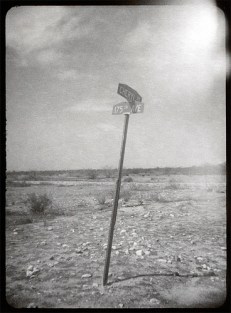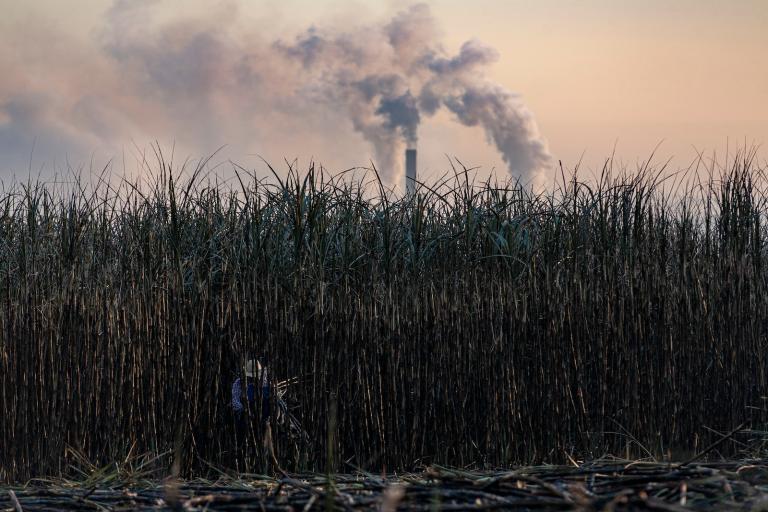 What was the most surprising thing that came out of Andrew Ross’s two-year research stint in Phoenix, Ariz.? For my money, it’s this: People who live there (weirdly) don’t expect their desert civilization to collapse around them at any moment.
What was the most surprising thing that came out of Andrew Ross’s two-year research stint in Phoenix, Ariz.? For my money, it’s this: People who live there (weirdly) don’t expect their desert civilization to collapse around them at any moment.
“One of New Yorkers’ favorite things is to imagine the destruction of their city. There’s a whole library of movies and novels that do this,” Ross said during a recent visit to the Grist offices. “There’s no equivalent in Phoenix.”
Chalk it up to the power of denial.
Ross, a professor of social and cultural analysis at NYU, sets the scene in his new book, Bird on Fire: Lessons from the World’s Least Sustainable City — the product of his two-year study, which included interviews with hundred of Phoenicians:
The 17,000-square-mile region known as Greater Phoenix depends on a water supply pumped 300 miles uphill from the overallocated Colorado River, now in the second decade of a drought that has shrunk its volume to unprecedented lows. From 1990 to 2007, Arizona added fossil-fuel pollutants faster than any other state — the rate of increase was more than three times the national average … Once a haven for TB sufferers seeking respirator relief, by 2005 the Valley’s infamous Brown Cloud was drawing the lowest national grades from the American Lung Association for air quality in both ozone and particulates …
To cap it all, climate change [has] targeted the state for special attention in the years to come. As Jonathan Overpeck, Arizona’s leading climatologist (and one of the chief authors of the seminal 2007 assessment by the Intergovernmental Panel on Climate Change), warned the state’s House Environment Committee in 2009: “Whether it is drought frequency, the increase in temperature, or the decrease in soil moisture, we are in the bull’s eye — the worst in the United States.”
And then there’s the fact that Phoenix is built atop the ruins of an actual fallen civilization: The Hohocam, who once built an agricultural empire 40,000 strong in this valley, had all but vacated the place by the mid-1400s.
This city is going to dry up and blow off the map. Right?
Well, maybe not, says Ross. There’s a burgeoning movement to make Phoenix more green — and “if Phoenix can become sustainable,” he says, “any place can.”
Surprisingly enough, Ross found some bright spots — and the seeds of something quite revolutionary. Just-departed Phoenix Mayor Phil Gordon instituted a 17-point plan to make Phoenix “the greenest city in America.” A posse of engaged artist-activists have become the new “model citizens,” filling a niche vacated years ago by a merchant class that fled the city core for the suburbs. An urban farming movement is taking root in some of the poorer neighborhoods of south Phoenix.
But the most interesting, and potentially groundbreaking thing Ross found was on the outskirts of town. There, in 2004, the Gila River Indian Community won a landmark legal settlement, affirming their right to roughly a third of Arizona’s allocation of the Colorado River. They plan to use that water to grow crops, building a regional food system in a place that badly needs it.
“This is an example of environmental justice where you return natural resources to those who have been deprived or denied them,” Ross says, “but you do it in a way that it extends benefits everyone.”
It’s a model, he says, that could be taken up elsewhere. “So many mayors and city hall administrations adopt sustainability plans either as a vehicle for economic development or for cost avoidance,” Ross says. “I have yet to see a city hall take up a sustainability plan as a vehicle for redressing civil rights.”
Ross is not the first to suggest this. Van Jones and Majora Carter come to mind. And my good friend Lionel Foster wrote about it on this site just a couple of weeks ago. But the Gila River Indians give us an example of what true environmental justice could actually look like.
Of course, it would be easy to make the case that the Gila River settlement was far too little too late, like the recent mortgage settlement aimed at righting some of the misdeeds of banks that lead to the national real estate meltdown — a settlement that amounts to what one critic calls “a drop in the ocean.” And Ross certainly found plenty of reason not to be optimistic about the future of Phoenix, including rising xenophobia evident in Arizona’s byzantine immigration laws.
Still, he says, much ink has been spilled on “eco-enclaves” such as Portland and Seattle. “We don’t just live in the success stories. Much more vulnerable and even recalcitrant cities have much more to teach us about whether we have the wherewithal to make changes.”
The statement is true on the national level — and locally too. “Unless you start promoting sustainability initiatives that are targeted at most vulnerable members of your community, and use them as a baseline for measuring green policy, you’re simply going to add a layer of green gloss,” Ross says.
Oh, and as for those visions of Phoenix collapsing dramatically into the desert sands? It’s a tired, Hollywood notion, Ross says. “That’s not the way it happens. We’re actually living through an eco-apocalypse — it’s a very slow one.”
Slow by Hollywood’s standards, perhaps. But that gives us a little time, at least, to defuse the bomb we’ve set ticking, and spare ourselves and the world from some of the most disastrous consequences. Whether Phoenix itself can be spared, Ross won’t speculate. But regardless, Bird on Fire holds lessons that will be of use to the rest of us as we navigate the rolling, slow-motion disaster movie that will never make it onto the silver screen.



